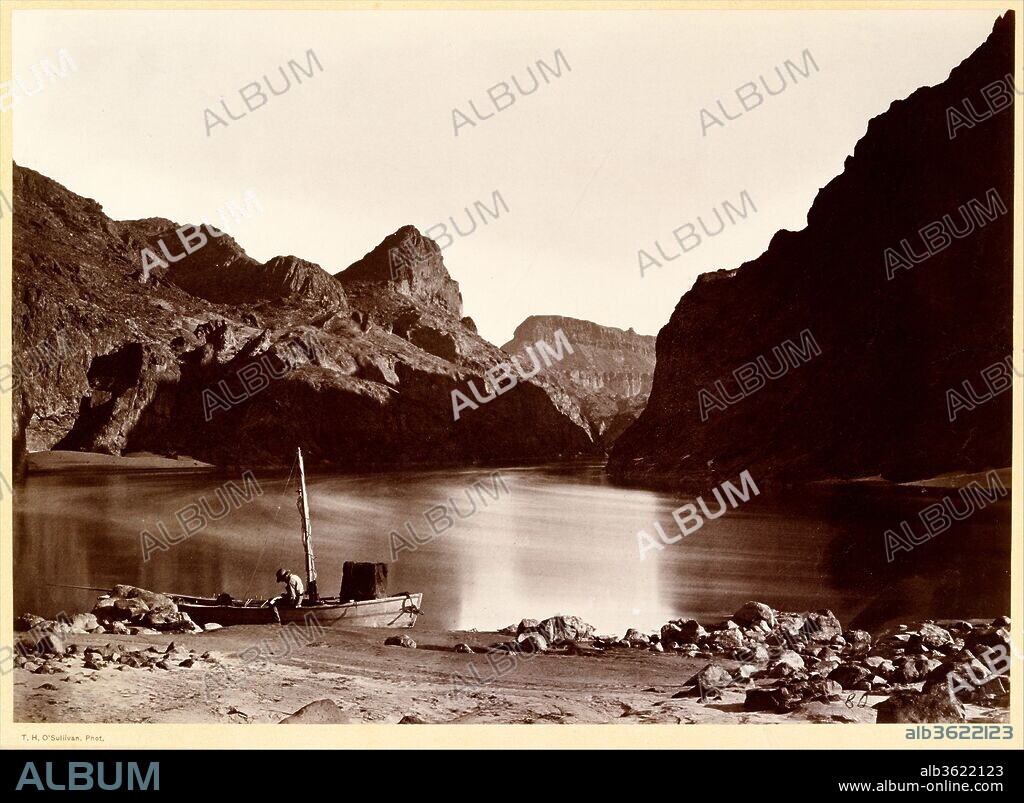TIMOTHY H. O'SULLIVAN. Black Cañon, From Camp 8, Looking Above

|
Añadir a otro lightbox |
|
Añadir a otro lightbox |




As O'Sullivan's experience in the field was unequaled from his work as a photographer during the Civil War, it is not surprising that Wheeler placed great confidence in him from the outset, providing him with a roving commission and a boat of his own on the Colorado River. Although Wheeler's boats progressed slowly (they had to be rowed, sailed, and hauled upriver against the current), O'Sullivan's was tardier still. Exploring the astonishing photographic possibilities of the canyons from his boat, "Picture," he meandered, tacked, and stopped as he studied how to turn to advantage the sun and shade, the sheer cliffs, and their reflection in the water and profile against the sky.
Individually, the Black Canyon photographs have exquisite resolution. In sequence, they constitute the pictorial voyage of a reflective, visionary artist who knew how to orchestrate his experience of place. As one turns the pages of the album, the shifting perspectives of river and cliff move in stately progression as, effectively as a diorama, they carry the viewer deep into the very heart of the canyon, where, Wheeler wrote, "a stillness like death creates impressions of awe."
This photograph appears in an album of thirty-five photographs by O'Sullivan entitled "Photographs Showing Landscapes, Geological and Other Features of Portions of the Western Territory of the United States Obtained in Connection with Geographical and Geological Explorations and Surveys West of the 100th Meridian. Season of 1871."
.¿Preguntas relacionadas con los derechos?
 Pinterest
Pinterest Twitter
Twitter Facebook
Facebook Copiar enlace
Copiar enlace Email
Email
